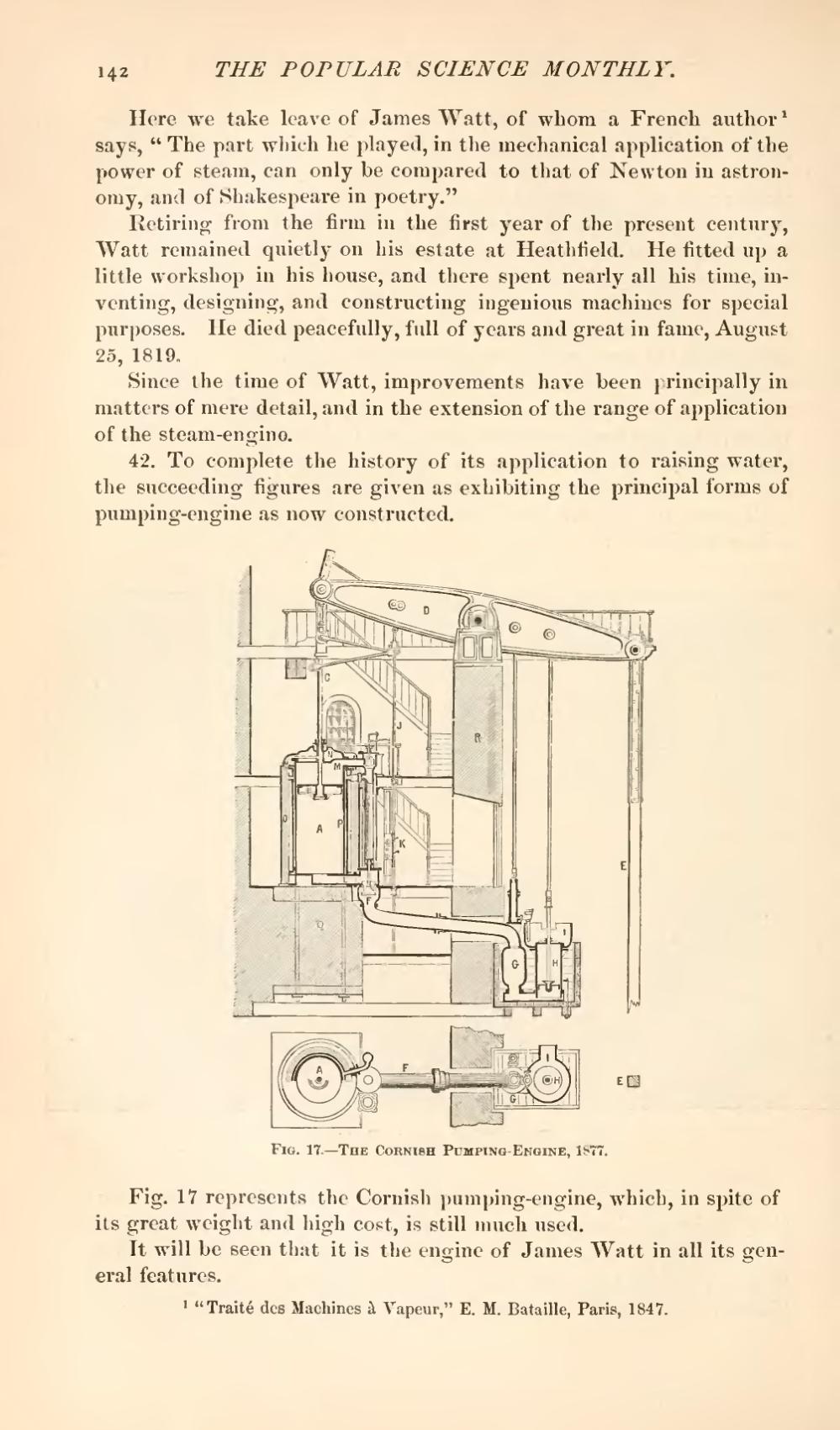Here we take leave of James Watt, of whom a French author[1] says, "The part which he played, in the mechanical application of the power of steam, can only be compared to that of Newton in astronomy, and of Shakespeare in poetry."
Retiring from the firm in the first year of the present century, Watt remained quietly on his estate at Heathfield. He fitted up a little workshop in his house, and there spent nearly all his time, inventing, designing, and constructing ingenious machines for special purposes. He died peacefully, full of years and great in fame, August 25, 1819,
Since the time of Watt, improvements have been principally in matters of mere detail, and in the extension of the range of application of the steam-engine.
42. To complete the history of its application to raising water, the succeeding figures are given as exhibiting the principal forms of pumping-engine as now constructed.

Fig. 17.—The Cornish Pumping-Engine, 1877.
Fig. 17 represents the Cornish pumping-engine, which, in spite of its great weight and high cost, is still much used.
It will be seen that it is the engine of James Watt in all its general features.
- ↑ "Traité des Machines à Vapeur," E. M. Bataille, Paris, 1847.
